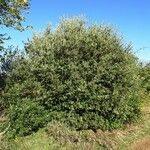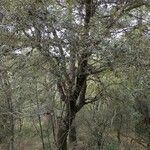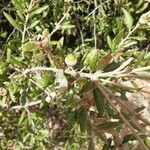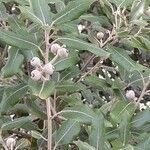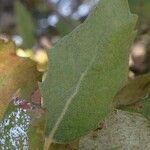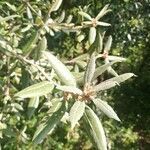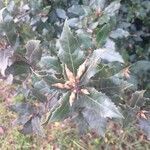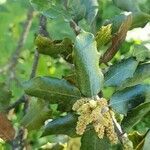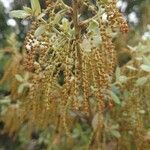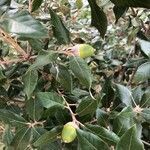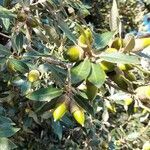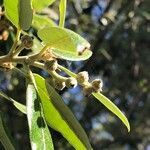Large evergreen tree (to c. 25 m tall in cultivation); bark rough and fissured. Shoots and buds grey-tomentose, without surrounding stipules. Petioles 5-15 mm long, grey-tomentose. Stipules subulate. Lamina 3-8 × 1.5-3.5 cm, usually ovate-oblong or ovate-lanceolate, less commonly broad-elliptic, coriaceous, entire or sometimes spinulose-dentate (lvs of juvenile and vegetative shoots often spinulose-dentate), deep shining green and glabrous above, usually grey-or whitish tomentulose beneath; base broad-cuneate or rounded. ♂ catkins 1.5-2.5 cm long, clustered; rachis villous; bracts densely silky; fls dense along rachis; perianth 1-1.5 mm long, villous outside; stamens 4-8. Frs in clusters of 1-3 fertile ones on a short tomentose peduncle, reaching maturity in first year. Cup 1.3-2 cm diam.; scales appressed, ovate, tomentulose. Acorns mostly 1.5-2 cm long, ovoid, ⅓-⅔ enclosed by cup.
A large tree. It grows to 20-25 m tall and spreads 18-22 m wide. It has a dense rounded crown. It is evergreen. The leaves are alternate. The younger leaves are broad and spiny and older leaves are narrow and do not have teeth. The leaves are glossy and dark green but grey underneath. The male flowers are long and yellow catkins. The acorns are round and small. They can be produced singly or in clusters. They are 2/3 rds enclosed in a scaly cup. The acorns are edible.
